For a long time now forums have been buzzing with guesses and speculation: when will Canyon release a successor to the current Strive? Its two siblings, the Spectral and Torque, have already been fundamentally reworked. The Strive, however, only received a minor facelift for the new year – but this test shows it’s far from being outdated.
For an overview of the test fleet head to the group test: The Crème de la Crème – Nine high-end enduro bikes of 2018 in comparison

170/160 mm (f/r) | 13.15 kg | € 4,999
Although the Strive has been part of Canyon’s portfolio for some time now, the bike is anything but outdated – both visually and technically. On the contrary, initial teething problems have now been eliminated, and the bike is riding better than ever. For the new season, Canyon has updated the components and installed a FOX FLOAT DPX2 shock at the rear. For a price of € 4,999 Canyon specs only the finest components. A SRAM X01 Eagle drivetrain makes bikers’ hearts beat faster, just as the FOX 36 Factory fork and the Renthal carbon cockpit does. As standard, Canyon mounts the Reverb Remote on the right side of the handlebar, but we recommend placing it on the left beneath the Shapeshifter. That way you have both remotes under control, allowing you to react quickly before climbs.
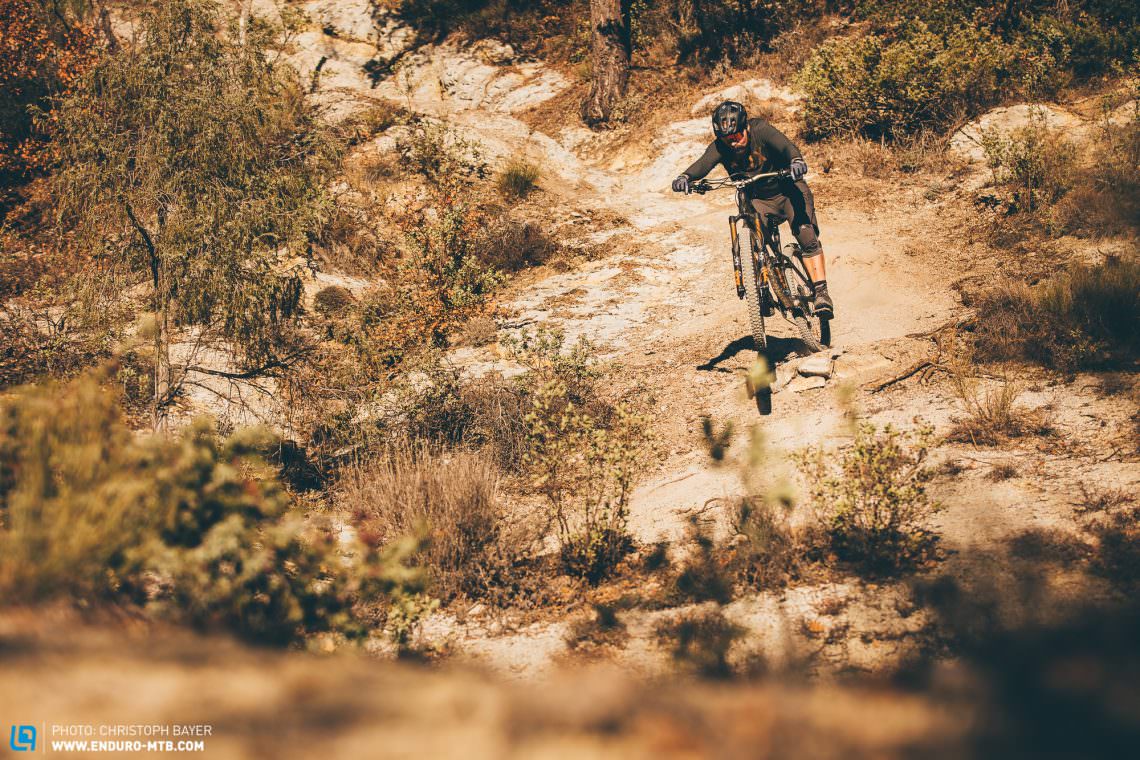
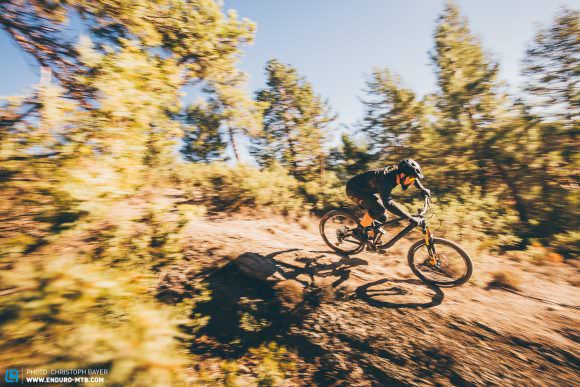

Anything but old-fashioned, the Strive cuts a very fine figure in this group test!
Speaking of the Shapeshifter: activating it via the remote on the handlebar reduces the rear end travel to 130 mm while simultaneously steepening the head angle. On climbs, you’re placed centrally on the Strive in a comfortable position to put a lot of pressure on the pedals. The suspension is very resistant to pedal bob, and in combination with the low weight of 13.15 kg, the Strive scoots uphill briskly. Despite the high cockpit, the front wheel stays on the ground, and even steep, technical sections can be mastered with ease. Heading downhill, it is precisely this high front, coupled with a low bottom bracket and the long frame, that instills the rider with confidence. You are super-integrated into the bike, making it effortless to drive the rear wheel through tight turns. In corners, the Strive requires an active riding style due to the short rear end (423 mm chainstays), but then rewards the rider with a high degree of agility. The rear linkage works very well with the FOX DPX2 and feels much plusher than with other shocks used in recent years. This provides an extra portion of traction and smoothness. Nevertheless, the bike feels very defined and never leaves the rider in the dark as to what is going on with the trail beneath him. On the dry, rocky test trails the rear Minion SS tire worked well; as an all-rounder for the whole year, however, it’s too specialised.
The Canyon Strive CF 9.0 in detail
Fork FOX 36 FLOAT Factory 170 mm
Rear shock FOX FLOAT DPX2 Factory 165/135 mm
Brakes SRAM Guide RSC 200/180 mm
Drivetrain SRAM X01 Eagle
Seatpost RockShox Reverb 150 mm
Stem Rentahl Apex 40 mm
Handlebar Rentahl Fat Bar 780 mm
Tires MAXXIS Minion DHR II 2.4″ / SS 2.3″
Wheelset DT Swiss EX 1501 Spline One
Weight 13.15 kg
Price € 4,999
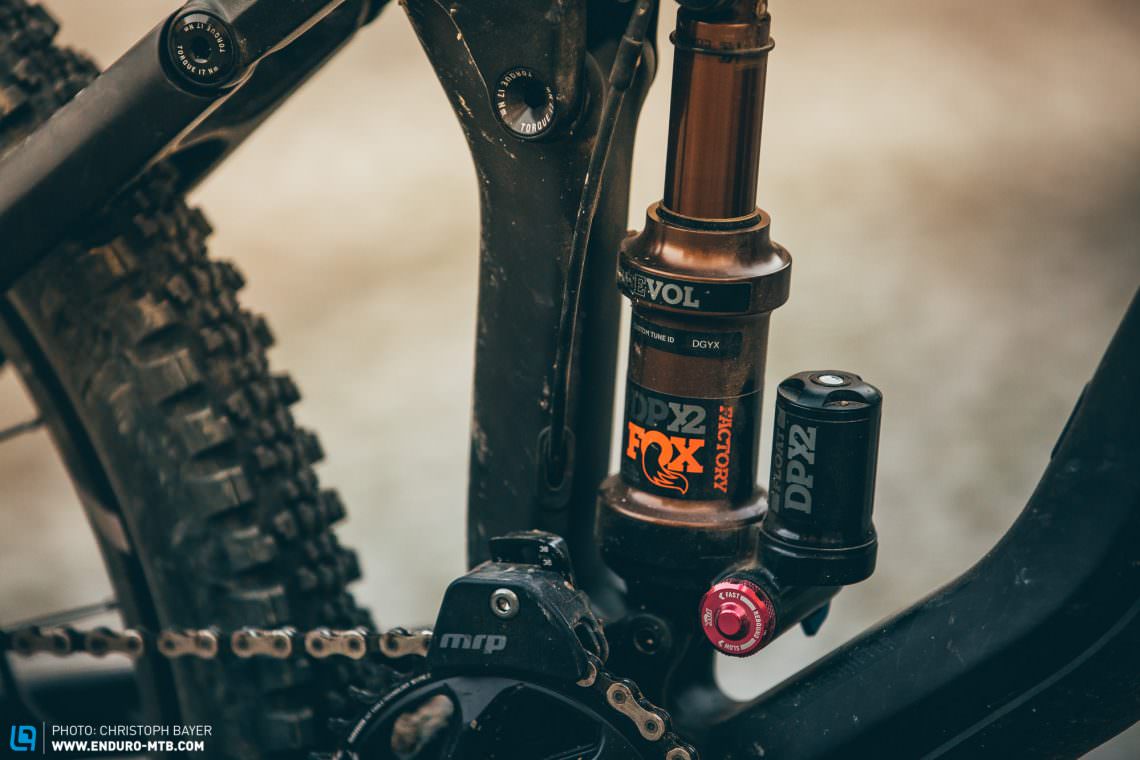
The rear suspension has become even more sensitive and defined with the FOX DPX2. It’s smooth over small bumps and absorbs bigger blows effectively.
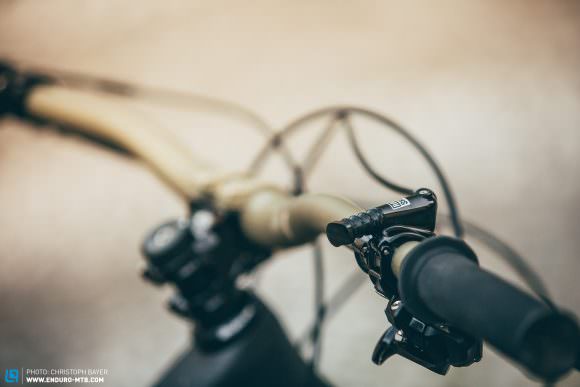
Canyon mounts the Reverb remote on the right-hand side so that you can get used to the Shapeshifter. We recommend mounting it on the left side beneath the Shapeshifter after a few rides.

The MAXXIS Minion SS was convincing on the dry, rocky test trails. As an all-rounder for the whole year, however, it’s too specialised.

The 170mm FOX 36 FLOAT Factory suspension fork is in a class of its own. It offers defined performance while remaining sensitive and is currently the benchmark for enduro forks.
The geometry of the Canyon Strive
| Size | XS | S | M | L | Xl |
|---|---|---|---|---|---|
| Seat tube | 388 mm | 430 mm | 430 mm | 460 mm | 500 mm |
| Top tube | 576 mm | 600 mm | 629 mm | 648 mm | 658 mm |
| Head tube | 95 mm | 115 mm | 125 mm | 135 mm | 155 mm |
| Head angle | 66° (+1.5°) | 66° (+1.5°) | 66° (+1.5°) | 66° (+1.5°) | 66° (+1.5°) |
| Seat angle | 73.5° (+1.5°) | 73.5° (+1.5°) | 73.5° (+1.5°) | 73.5° (+1.5°) | 73.5° (+1.5°) |
| Chainstays | 423 mm | 423 mm | 423 mm | 423 mm | 423 mm |
| BB High | 340 (+19) mm | 340 (+19) mm | 340 (+19) mm | 340 (+19) mm | 340 (+19) mm |
| Wheelbase | 1132 mm | 1158 mm | 1188 mm | 1207 mm | 1240 mm |
| Reach | 402 mm | 422 mm | 448 mm | 468 mm | 487 mm |
| Stack | 592 mm | 606 mm | 615 mm | 627 mm | 643 mm |
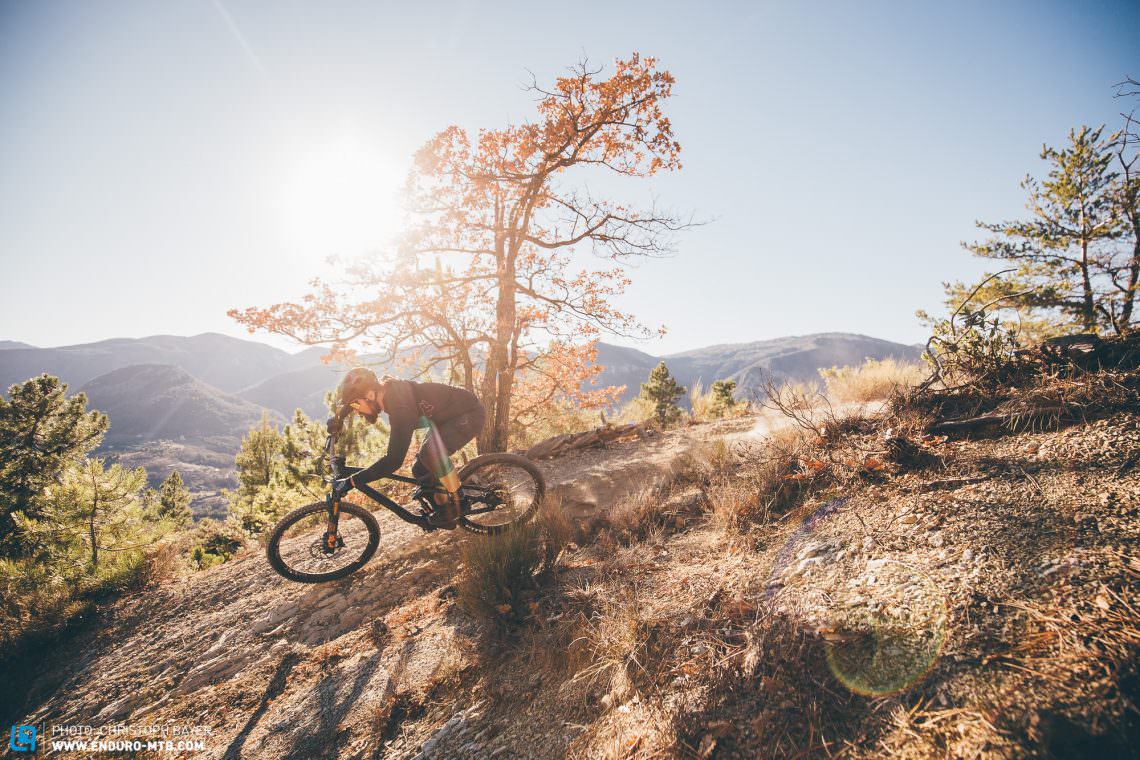
Conclusion
The Canyon Strive CF 9.0 is better than ever and remains a great all-rounder. It climbs efficiently and shreds downhill while being a tremendous amount of fun to ride. The mix of agility and smoothness is just as successful as the performance of the rear linkage. But beware: this bike requires an engaged riding style to tease out its full potential.
Strengths
+ efficient climber
+ good value for money
+ fun downhill
Weaknesses
– rear tire too specialised
– requires a spirited riding style
Uphill
Downhill
Stability
Agility
Value for money
For more info head to: canyon.com
The test fleet
For an overview of the test fleet head to the group test: The Crème de la Crème – Nine high-end enduro bikes of 2018 in comparison
All bikes in test: Cannondale Jekyll 1 | Evil The Wreckoning X01 | Kona Process 153 CR 27,5 | Merida ONE-SIXTY 8000 | Orbea Rallon M-Team | Santa Cruz Nomad 4 CC XX1 | Specialized Enduro 29 Pro | Trek Slash 9.8
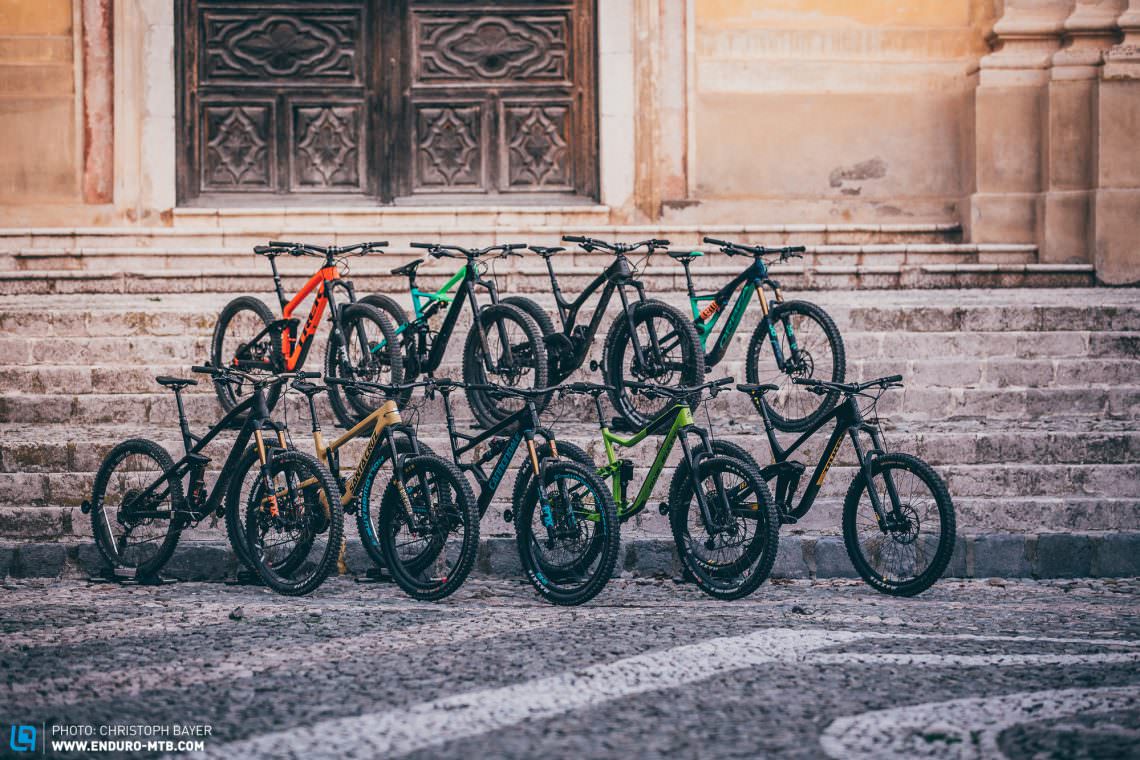
This article is from ENDURO issue #032
ENDURO Mountainbike Magazine is published in a digital app format in both English and German. Download the app for iOS or Android to read all articles on your tablet or smartphone. 100% free!

Did you enjoy this article? If so, we would be stoked if you decide to support us with a monthly contribution. By becoming a supporter of ENDURO, you will help secure a sustainable future for high-quality mountain bike journalism. Click here to learn more.
Words: Photos: Christoph Bayer, Valentin Rühl











